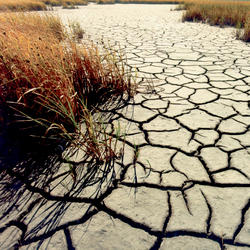Drought Prediction
Drought Prediction
Filter Total Items: 6
Impacts of changing climate and disturbance regimes on forest ecosystem resilience in the Southern Rocky Mountains
Climate-driven forest disturbances, particularly drought-induced tree mortality and large high-severity fires from increasingly warm and dry conditions, are altering forest ecosystems and the ecosystem services society depends on (e.g., water supplies) in the Southern Rockies and across the Western U.S. We will combine unique, long-term place-based ecological data, diverse methods (e.g., paleo...
Drought Prediction Science
Drought is a prolonged and widespread deficit in available water supplies that creates multiple stressors across ecosystems and communities. The U.S. Geological Survey Water Mission Area conducts drought research and modeling to improve drought prediction capabilities. The research focus is on understanding the hydrological, ecological, and economic ramifications of drought. The modeling focus...
Drylands are highly vulnerable to climate and land use changes: what ecosystem changes are in store?
Improper land use during drought has been a major driver of land degradation in drylands globally, especially in the western U.S. Increasing aridity in western U.S. drylands under future climates will exacerbate risks associated with drought and land use decisions. This project provides critical observational, experimental, and modelling evidence to support our DOI partners with decision processes...
Preparing for Drought
Drought poses a serious threat to the resilience of communities and ecosystems in the United States. Over the past several years, many regions have experienced extreme drought conditions, fueled by prolonged periods of reduced precipitation and exceptionally warm temperatures. As global temperatures continue to rise, the frequency, severity, and duration of droughts are expected to increase across...
By
Climate Variability
To understand changes in our climate, USGS scientists are synthesizing long-term data sets, including geologic records that can extend over millions of years. Paleoclimatology, in particular, uses evidence of past climate change preserved in sediments, rocks, tree rings, corals, ice sheets and other climate archives to reconstruct how climates varied in the past.
By
WaterSMART: Colorado River Basin
The Colorado River supplies water to more than 30 million people, irrigates nearly 4 million acres of cropland in the U.S. and Mexico, and supplies hydropower plants that generate more than 10 billion kilowatt-hours annually. Water from the river also provides for recreation and an array of environmental benefits, supporting a wide diversity of fish and wildlife and their habitats, and preserving...
By







